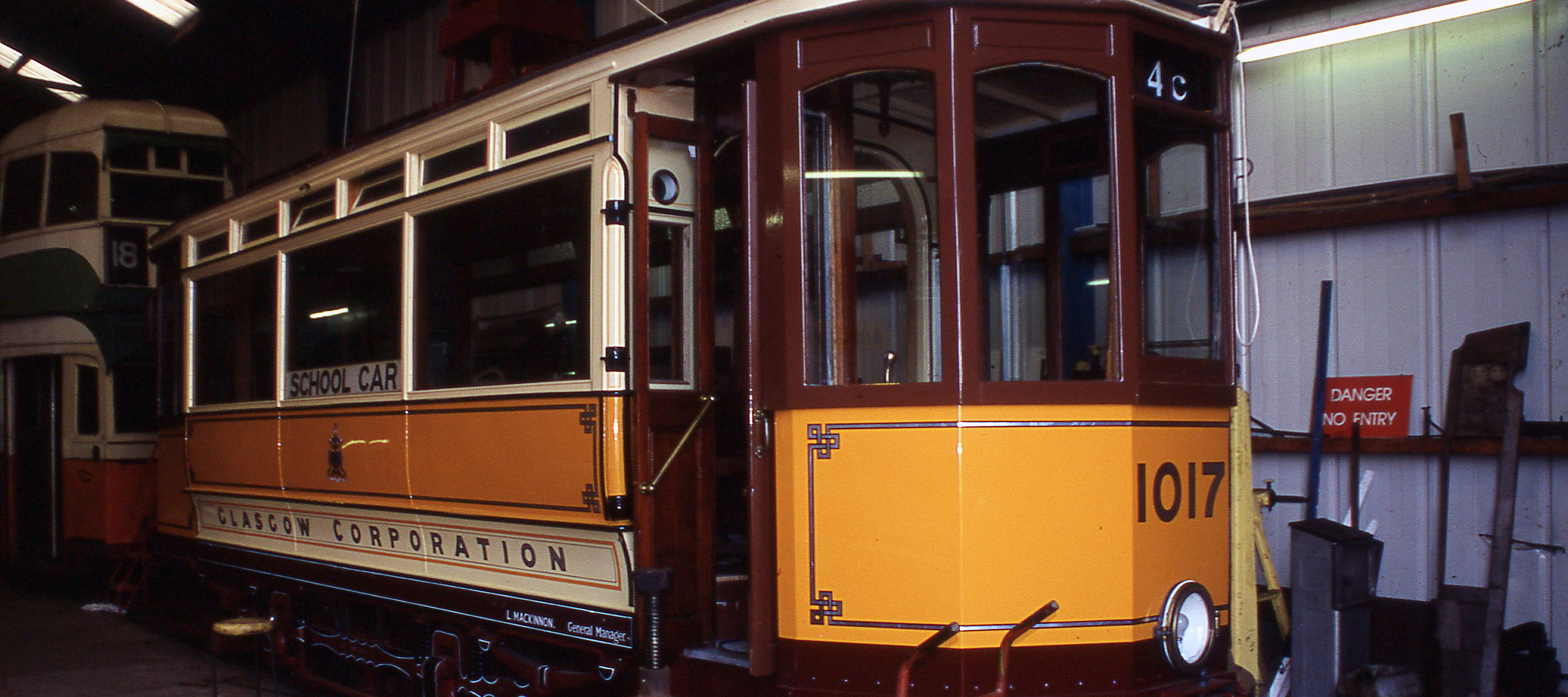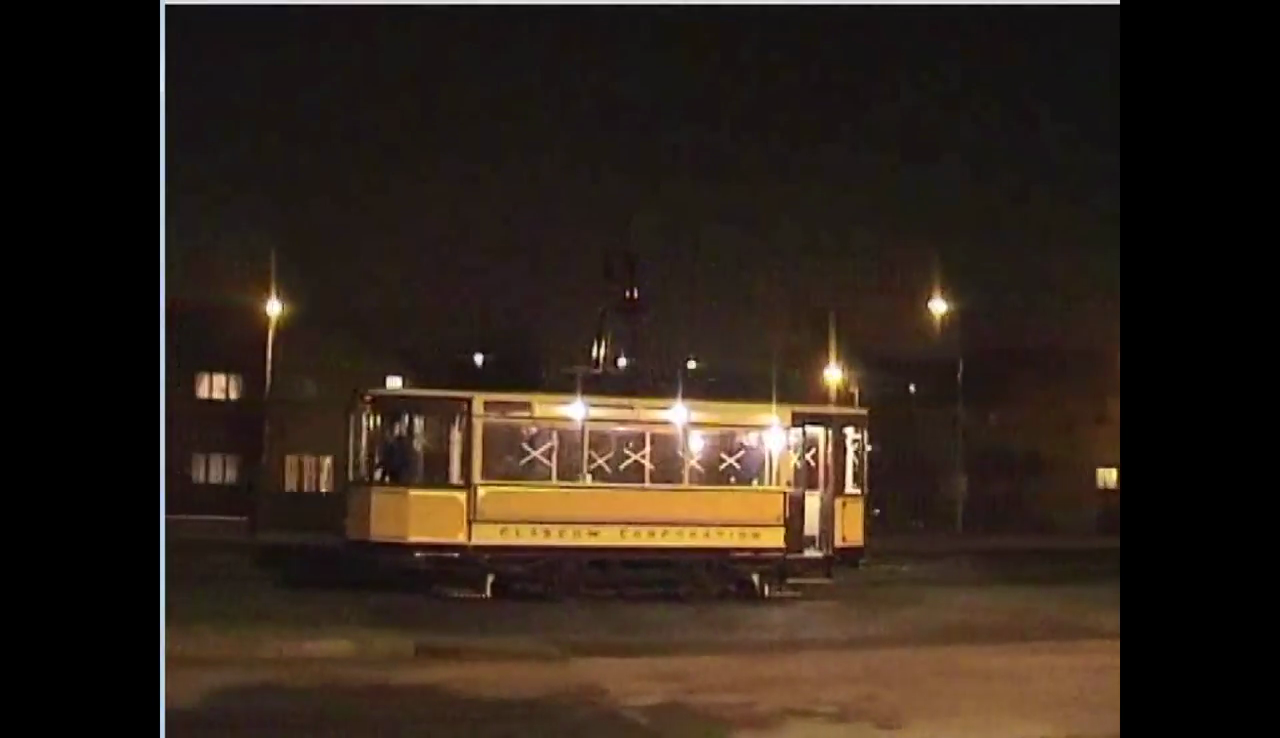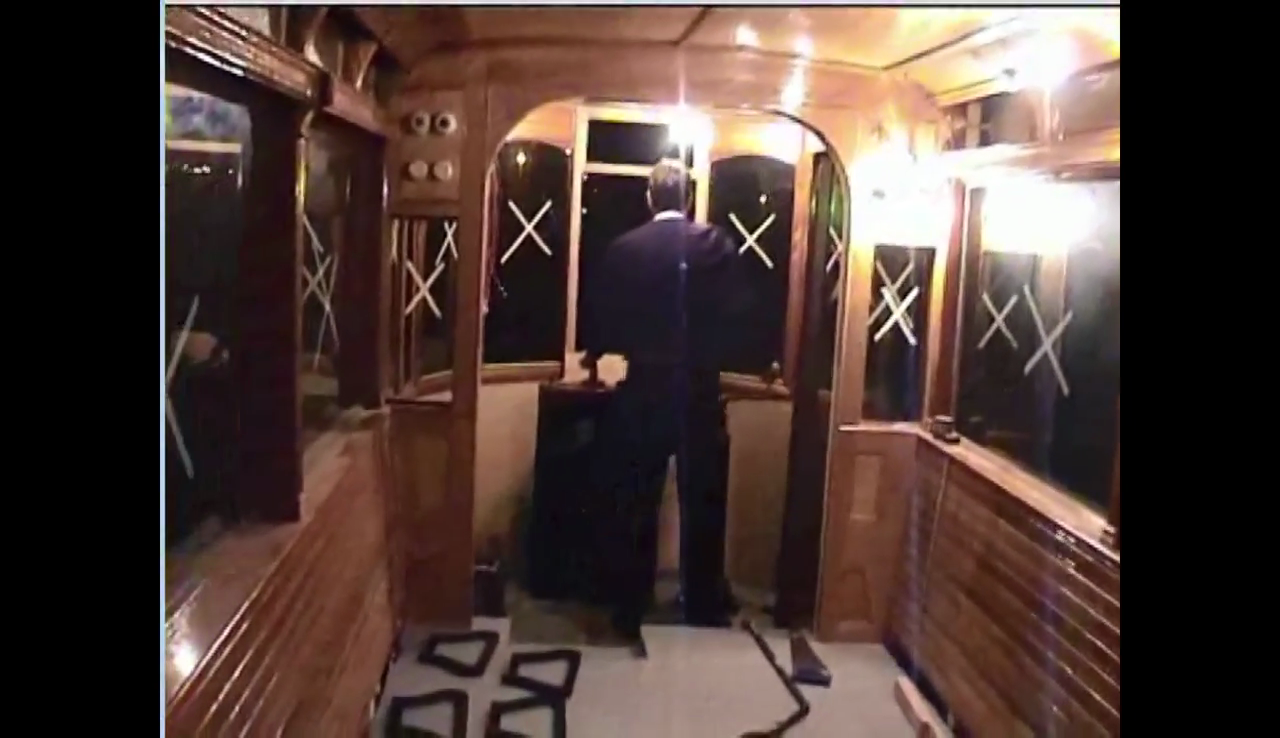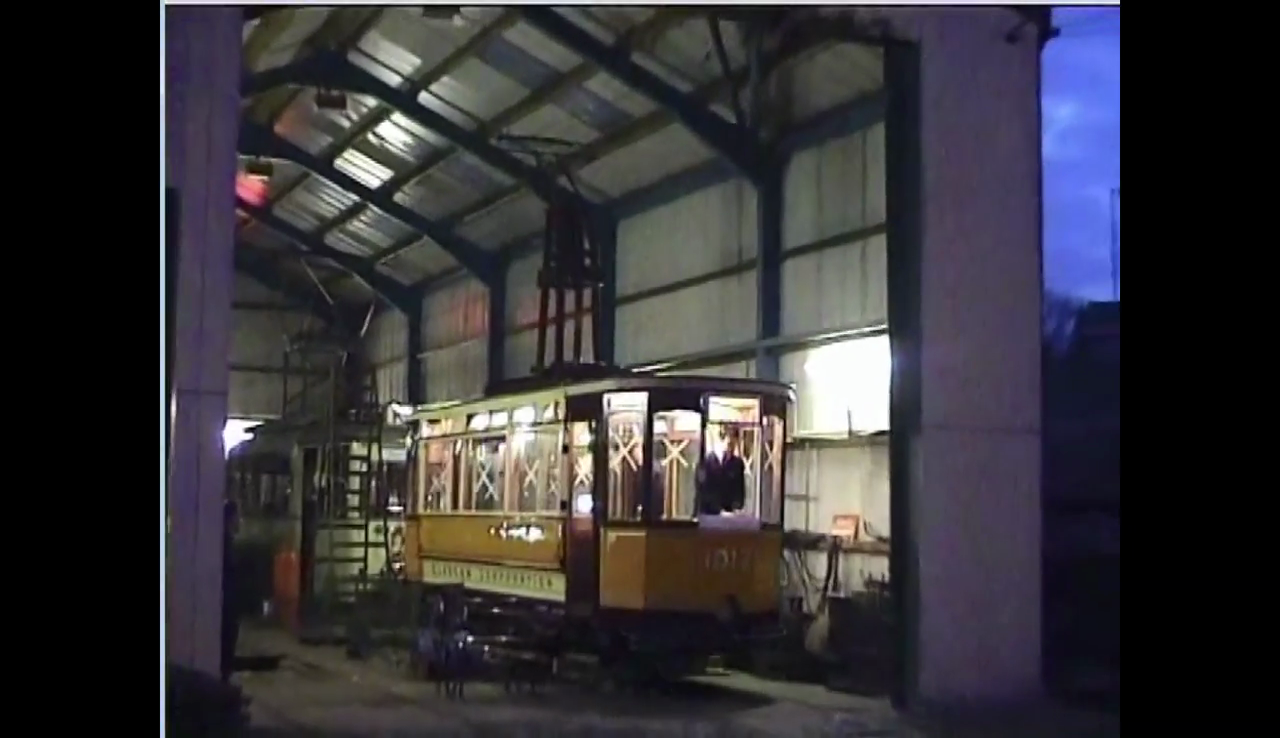1017's maiden voyage
Article from Trolley - Summer 2002, The newsletter of the STG

Brian Quinn was at the controller of 1017, for the car's first trip under its own power for 43 years. Nine years had elapsed since the former summerhouse had been moved to Summerlee, to be rebuilt into its former identity. Countless hours had been spent, carefully dismantling the old structure, making patterns, replacing timber, salvaging the original where possible and generally making good nearly a hundred years of use, of one sort or another.
Many new items were needed, and a great deal of ingenuity went into the sourcing of these parts. Contacts in the tramway restoration business are few but cherished, however many bits and pieces had to be built from scratch. At last the dream came together, and the Transport Group's biggest restoration project to date was ready to take to the rails.
The car edged cautiously forward, and the evening sky lit up, as the combination of old copper oxide and new paint on the bow collector ionised in a series of violent sparks. The wheels ground, the bearings groaned and the lights flickered, as she eased round the depot curve into the night.



Attention from the onlookers was divided, between recording the event on film and video, keeping an eye out for mishaps, and generally enjoying a spectacle that had not been witnessed in Scotland since the last Glasgow tram's lights flickered out for the last time, forty years previously. Some may claim that the Garden Festival trams opened up a brief period of nostalgia, but in truth, none of those cars were equipped with that most Glasgow of tramway institutions, a Fischer Bow Collector. And it was this that all eyes were on tonight.
The overhead contact wire had been strung in a compromise for the cars fitted with both pantographs and a trolley pole, and· it was hoped that the narrower contact plate of the bow would still be within the wire's lateral limits as it slid along. As it turned out, the car maintained contact with the overhead except where the wire height was out of the bow's vertical reach. This was much easier to solve as the bow had a facility to be lengthened slightly. In fact, the only section requiring re-aligning was the depot approaches.
Returning to the nocturnal test, the first problem that was encountered was when the car •grounded•, standing dark and lifeless as the bow rocked vainly in the fresh, evening air, out of reach of the wire. After some heroic efforts at physical persuasion, it was deemed sensible and timeous to summon the assistance of the Dusseldorf (392) car, which swiftly pushed the car under a lower section of wire.
With the knowledge of where the "dead spots" in the overhead were, it was possible to continue with the "running in". The car ran well, and the new bearings, noticeably tight on the first run, eased off as the car passed to and from. The cobbled setts, high between the rails on the bridge section, knocked off the errant tails of some small bolts securing the new timbers on the lifeguard tray.
After a memorable, but important, step in the eventual commissioning of the car, the group members dispatched 1017 back to its resting place in the depot.
If you have any photos of videos of Glasgow 1017 first run or any photos/videos of Summerlee in the 1980's/1990's can you contact/send them to us on stgdispay@gmail.com .
you photos/videos may be shaird with Summerlee Museum and CultureNL.
you photos/videos may be shaird with Summerlee Museum and CultureNL.